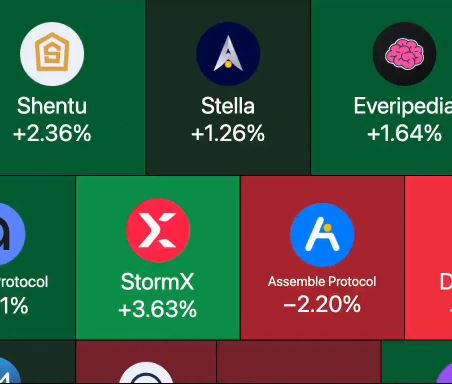# Strengthening Financial Integrity: BIS Proposes AML Compliance Framework for Cryptoassets
The **Bank for International Settlements (BIS)** has released its *BIS Bulletin No. 111* titled *“An approach to anti-money laundering compliance for cryptoassets”* (Aldasoro, Frost, Lim, Perez-Cruz & Shin, 2025) [[PDF]](https://www.bis.org/publ/bisbull111.pdf). The paper addresses one of the most pressing challenges in today’s financial system: ensuring robust **anti-money laundering (AML)** standards in an era where cryptoassets and stablecoins are deeply integrated into global finance.
—
## Why AML in Crypto Matters Now
The rapid growth of **permissionless blockchains** like Bitcoin and Ethereum, combined with the **proliferation of stablecoins**, has amplified concerns about illicit finance. According to **Chainalysis (2025)** and **TRM Labs (2025)**, stablecoins surpassed Bitcoin as the preferred vehicle for illicit transactions in 2024, representing nearly **63% of all identified illicit crypto activity**. The estimated total value of illicit crypto transactions exceeded **$51 billion** in 2024.
With stablecoins increasingly used across borders, regulators warn that unchecked flows could erode **monetary sovereignty**, weaken **foreign exchange controls**, and undermine **monetary policy effectiveness** [[BIS Annual Report 2025]](https://www.bis.org/publ/arp25.htm).
—
## The Limits of Intermediary-Based Compliance
Traditional AML frameworks rely on **intermediaries** such as banks and payment processors to enforce compliance—verifying customers, monitoring transfers, and reporting suspicious activity. In crypto, this approach is less effective:
– **Permissionless blockchains** have no central intermediary. Transactions are validated by distributed miners or validators, making it impossible to assign accountability in the same way as banks.
– **Unhosted wallets** allow anonymous transactions outside regulated exchanges, evading conventional KYC/AML checks.
– While **stablecoin issuers** have occasionally frozen illicit balances upon request, such measures cannot realistically scale to billions of daily transactions.
—
## The BIS Proposal: AML Compliance Scores
The BIS proposes an innovative model: assigning an **AML compliance score** to cryptoassets based on their **transaction history and provenance**.
– **High score (clean funds):** Assets linked to verified or “allow-listed” wallets.
– **Low score (tainted funds):** Assets associated with “deny-listed” addresses tied to money laundering, terrorist financing, or sanctions evasion.
– **Threshold enforcement:** Conversion of crypto to fiat at “off-ramps” (banks, exchanges) would only be permitted if assets meet jurisdiction-specific AML score thresholds.
This approach leverages the **public traceability of blockchains**, turning a feature often seen as a privacy risk into a compliance tool.
—
## Policy Spectrum: From Strict to Flexible
The bulletin envisions a **spectrum of AML enforcement**:
1. **Strict compliance:** Only allow-listed wallets permitted for cashing out crypto. Every user—even with unhosted wallets—would require KYC verification.
2. **Permissive compliance:** Deny only those funds directly linked to illicit addresses.
3. **Intermediate options:** Scores based on recent transaction history, time-held in compliant wallets, or connections to known high-risk protocols.
This flexibility allows regulators to **tailor rules by jurisdiction**, accommodating both developed economies with strong FX regimes and emerging markets vulnerable to capital flight.
—
## Implications for Crypto Markets
If adopted, AML compliance scores could reshape crypto markets in several ways:
– **Token differentiation:** Coins with “clean” histories may trade at a premium, while tainted ones could be heavily discounted, similar to risk-adjusted pricing in traditional finance.
– **Shift in user behavior:** A culture of “duty of care” may emerge, incentivizing users to transact only with compliant wallets.
– **Third-party compliance services:** New opportunities for firms to provide blockchain analysis, monitoring, and risk-scoring.
– **Reduced anonymity:** Critics may argue that AML scoring erodes one of crypto’s founding principles—pseudonymity—by embedding compliance into the fabric of transactions.
—
## Broader Policy Considerations
The BIS stresses that **“same risk, same regulation”** cannot fully apply to crypto given its unique structure. Instead, regulators should **use crypto’s own properties—public, immutable ledgers—to enhance compliance**.
Moreover, international coordination is vital. As crypto assets operate globally, fragmented regulation risks **regulatory arbitrage**. Cooperative frameworks under **FATF (2025)** standards, particularly the “travel rule,” will be key.
Some experts even propose a **“bounty hunter” model** for AML compliance, where licensed firms are rewarded for detecting suspicious crypto flows, akin to cybersecurity bug bounties (Kellerman, 2025).
—
## Conclusion
The BIS proposal reflects a pragmatic evolution in AML enforcement. By leveraging blockchain transparency, regulators could **close gaps in financial integrity without banning crypto outright**.
However, challenges remain:
– Balancing privacy with compliance.
– Preventing circumvention via mixers and unregulated exchanges.
– Ensuring consistent application across jurisdictions.
As crypto adoption expands, the success of such AML frameworks may determine whether digital assets can safely coexist with the traditional financial system—or remain a systemic risk.
—
### References & Links
– **BIS Bulletin No. 111 (2025):** [*An approach to anti-money laundering compliance for cryptoassets*](https://www.bis.org/publ/bisbull111.pdf)
– **BIS Annual Report (2025):** [*The next-generation monetary and financial system*](https://www.bis.org/publ/arp25.htm)
– **Chainalysis (2025):** [*Crypto Crime Report*](https://blog.chainalysis.com/reports/2025-crypto-crime-report)
– **TRM Labs (2025):** [*Crypto Crime Report*](https://www.trmlabs.com/post/trm-labs-2025-crypto-crime-report)
– **FATF (2025):** [*Standards on Virtual Assets and VASPs*](https://www.fatf-gafi.org/en/publications/Fatfrecommendations/Guidance-on-virtual-assets-and-vasps.html)
– **Kellerman (2025):** [*Licensed detection agents: the case for financial crime bounty hunters*](https://ssrn.com/abstract=5106992)





